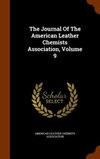Carbonization Region Measurement in Vegetable Tanned Goat Leather using Machine Vision System for Evaluating Performance Measures of Leather Cut Contour Edges
IF 0.5
4区 工程技术
Q4 CHEMISTRY, APPLIED
Journal of The American Leather Chemists Association
Pub Date : 2022-02-01
DOI:10.34314/jalca.v117i2.4728
引用次数: 4
Abstract
Due to the widespread application and popularity of lasers in recent times, the usage of laser cutting for leather applications has increased as well. Laser technology is needed to provide more consistent and effective results while cutting leathers that include complicated geometries particularly in several sectors where leathers are often utilized such as footwear, apparel and fashion accessories. In this investigation, the diode laser was preferred for leather cutting due to its regulated power density, compact size and portability whereas the CO2 lasers are uncontrollable. The benefit of employing a diode laser is that it can overcome some of the disadvantages associated with CO2 lasers such as power consumption, carbonization layer and geometric inaccuracy. There is no technique available to measure the carbonization at the leather cut contour edges. Hence an attempt has been made to investigate the carbonization percentage with the help of a machine vision system to improve the machining process. The technique of measuring carbonization can be used effectively in the leather industry for the accurate measurement of carbonization. The lower duty cycle with moderate pulse width modulation (PWM) and amplitude could produce lower carbonization layer. PWM frequency has a high influential role on determining carbonization in leather cutting.基于机器视觉系统的植物鞣山羊革炭化区域测量及皮革切割轮廓边缘性能评价
由于近年来激光的广泛应用和普及,激光切割在皮革应用中的使用也有所增加。在切割包括复杂几何形状的皮革时,需要激光技术提供更一致和有效的结果,特别是在鞋类,服装和时尚配饰等经常使用皮革的几个部门。在本研究中,二极管激光器因其可调节的功率密度、紧凑的尺寸和便携性而成为皮革切割的首选,而CO2激光器则是不可控的。采用二极管激光器的好处是,它可以克服与二氧化碳激光器相关的一些缺点,如功耗,碳化层和几何不精确。没有技术可以测量皮革切割轮廓边缘的碳化程度。因此,我们尝试利用机器视觉系统来研究碳化率,以改进加工工艺。该方法可以有效地应用于皮革工业中,实现对炭化的精确测量。较低的占空比,适当的脉宽调制(PWM)和幅度可以产生较低的碳化层。在皮革切割过程中,PWM频率对炭化影响很大。
本文章由计算机程序翻译,如有差异,请以英文原文为准。
求助全文
约1分钟内获得全文
求助全文
来源期刊

Journal of The American Leather Chemists Association
工程技术-材料科学:纺织
CiteScore
1.30
自引率
33.30%
发文量
29
审稿时长
3 months
期刊介绍:
The Journal of the American Leather Chemists Association publishes manuscripts on all aspects of leather science, engineering, technology, and economics, and will consider related subjects that address concerns of the industry. Examples: hide/skin quality or utilization, leather production methods/equipment, tanning materials/leather chemicals, new and improved leathers, collagen studies, leather by-products, impacts of changes in leather products industries, process efficiency, sustainability, regulatory, safety, environmental, tannery waste management and industry economics.
 求助内容:
求助内容: 应助结果提醒方式:
应助结果提醒方式:


